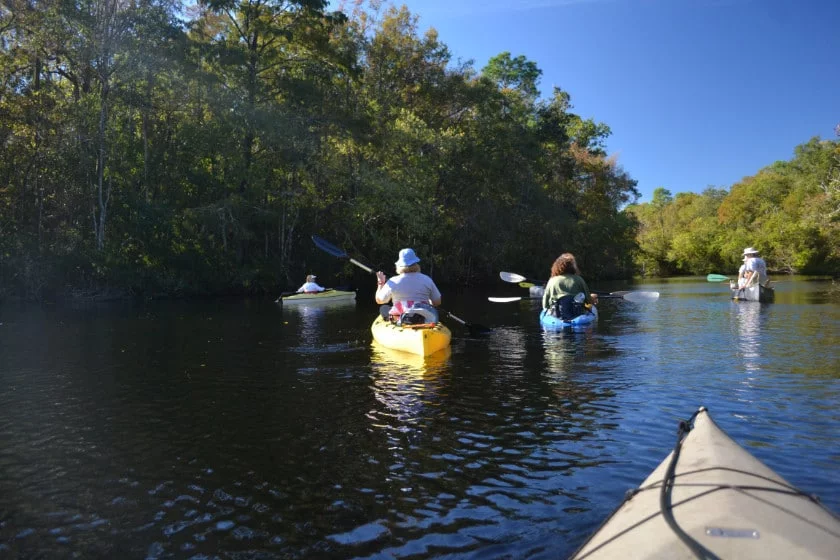You are here: Home > Things to See & Do >
Paddling on the Forgotten Coast
Did you know that more than 80 percent of Franklin County's 545 square miles is publicly owned and preserved as wilderness areas? Within the region, there are literally hundreds of miles of rivers, creeks and coastal shallows to explore by canoe or kayak. From floating pristine rivers by canoe to the challenges of a long-distance sea kayak adventure along a remote coastline, Franklin County, Florida has it all. Grab a paddle and let's go!

Paddling Resources
There are more than 40 designated State Paddling Trails in Florida. Strung together like a delicate chain, the trails wind through the State's rivers, lakes and along the coastal shoreline. Each trail is often part of a larger trail that connects to an even larger, more ambitious thru-paddling adventure. One of those fragile paddling links, the Apalachicola River Paddling Trail, runs through Franklin County.
Apalachicola River Paddling Trail System
The Apalachicola River Paddling Trail System is actually broken into 11 separate smaller trail sections. Paddlers at all levels of ability will enjoy these 11 canoeing and kayaking trails - nearly 100 miles through the swamps of the Apalachicola River. Distances range from short, easy trips to multi-day river trips flowing into open bays of the Gulf of Mexico. Click here to learn more.
The Florida Circumnavigational Saltwater Paddling Trail (The CT)
The premiere Mac-daddy thru-paddling trail in Florida is the 1550-mile, Florida Circumnavigational Saltwater Paddling Trail, or the "CT" for short. There are 26 segments of the CT. Franklin County's portion of the CT is located in sections 4 and 5, the Forgotten Coast and Crooked River. Click here to learn more.
The Florida Paddling Trails Association
Identifies several paddling trails within Franklin County. The Apalachicola Bay segment winds along the coast and features several barrier islands and bay. The Ochlockonee segment features eastern Franklin County paddling opportunities including the Carrabelle River, Crooked River and Bald Point State Park. Click here to learn more.
Paddling in the Forests
Franklin County features an abundance of waterways and paddling opportunities in the Apalachicola National Forest and the Tate's Hell State Forest.
Apalachicola National Forest
The Apalachicola National Forest is the largest forest in Florida at 571,088 acres. Nearly 3,000 acres of that is water. Six watersheds within the Apalachicola provide an abundance of fresh water streams, rivers, lakes, and natural springs.
Within the forest, there nine unique wilderness areas that feature more than 20 camping and non-motorized boat access launches to the rivers, lakes and streams in the forest. Remote waterways await the avid paddler looking for a multi-day journey through the Apalachicola National Forest following the winding Sopchoppy River or the remote New River. Paddlers can also explore the banks of the Apalachicola River, and use a canoe or kayak for a closer look at the major lakes on the forest, including Wright Lake, Silver Lake, and Camel Pond. Click here to learn more.
Tate's Hell State Forest
Tate’s Hell State Forest, covers more than 200,000 acres of public land. It is bordered on the west by the Apalachicola River and on the east by the Ochlockonee River. There are 35 miles of rivers, streams and creeks available for canoeing, kayaking, boating and fishing. A concrete boat launch site is located at Cash Creek, with additional launch sites available at locations throughout the forest. A list of the canoe/kayak trails that include the Tate’s Hell Forest can be found here.
Safety Tips
Here are basic safety tips that paddlers should follow to ensure a safe trip.
- Do not paddle alone. If inexperienced, join experienced paddlers and/or outfitters and try short trips first.
- File a float plan that contains departure location, time and date, and expected arrival date, time and location.
- Five short blasts on a whistle is the international signal for an emergency.
- Mind the weather conditions and forecasts. If in doubt, don’t proceed into open water.
- Stay well hydrated. Paddlers should carry at least one gallon of freshwater per person per day.
- Carry a tide chart. Some areas can be very shallow at low tide. In certain tidal creeks, rivers and passes, changing tides can cause strong currents that might help or hinder.
- When primitive camping, employ leave no trace principles.
- If fishing, a Florida fishing license is required for persons 16 years of age and older (free for Florida residents 65 or older).
- Mind the snakes. Snakes can be active in coastal environments, even in salt marshes.
- Poison ivy, poison wood trees and other plants that cause allergic reactions can be found along the trail. If in doubt, do not touch.
- Wear appropriate footwear.
For a complete list of safety tips and other helpful resources, click here.
Paddling Rentals
Franklin County features several boat rental businesses, many of which offer kayak, canoe and paddle board rentals.
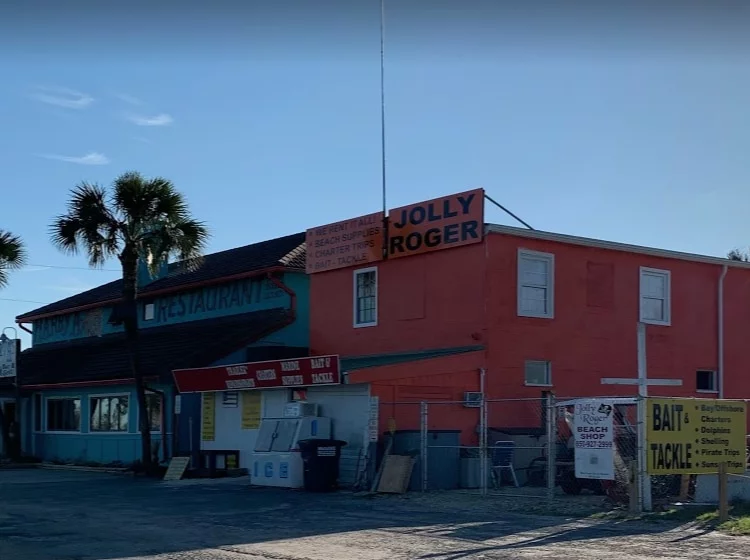
Jolly Roger Beach Shop
St. George Island
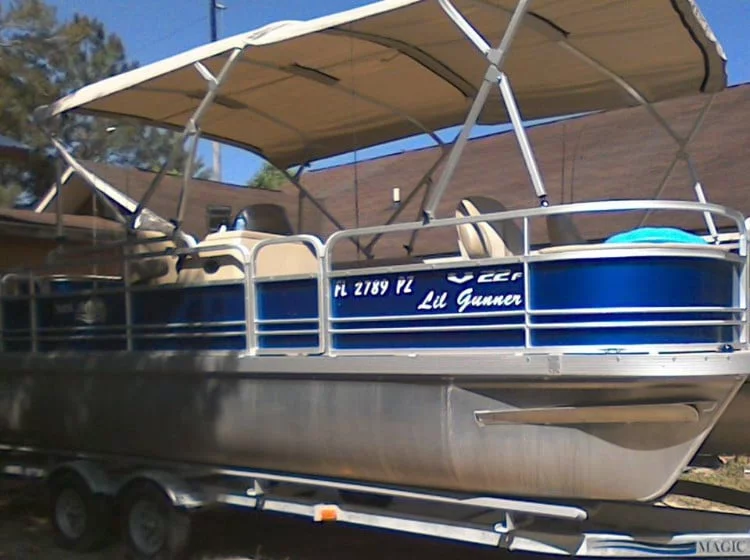
Gunner Pontoon Rentals
Carrabelle
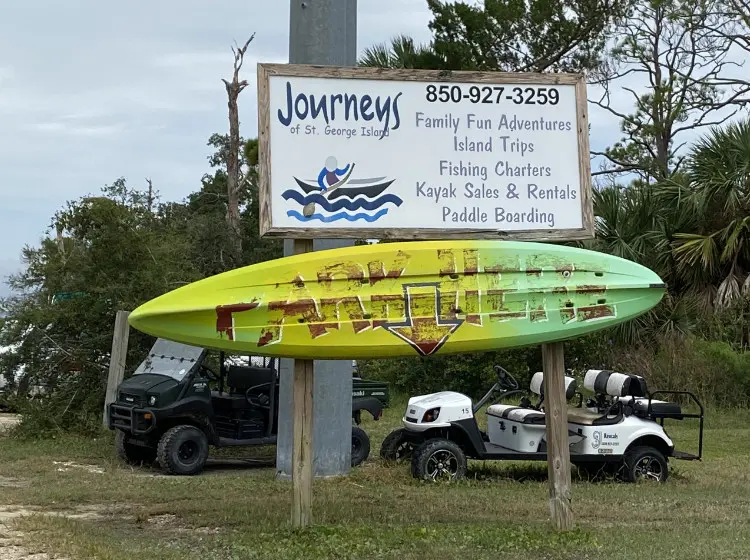
Journeys of St. George Island
St. George Island
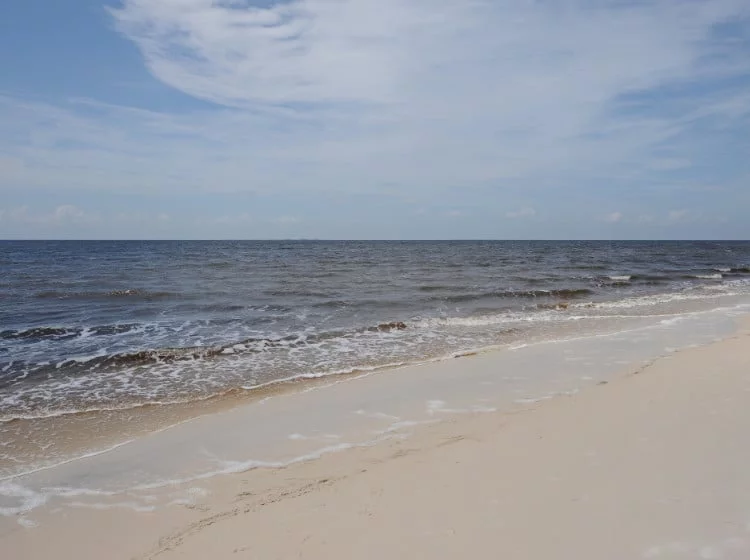
St. George Island Beach Service
St. George Island
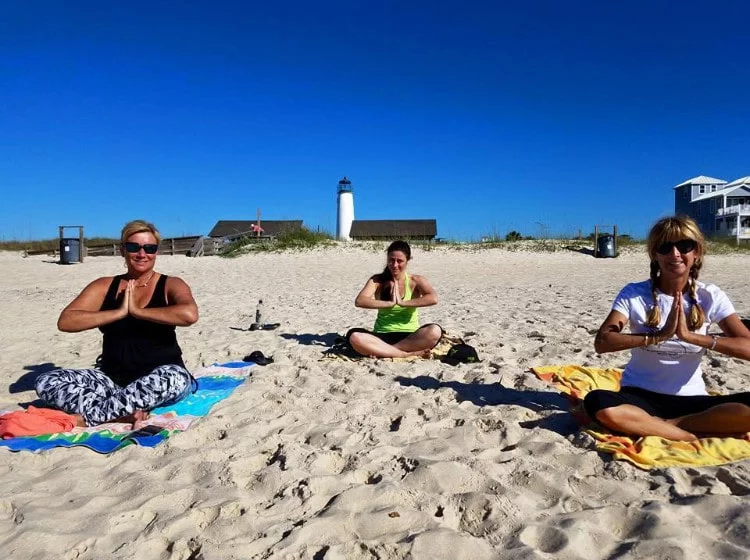
Island Fit SUP
St. George Island
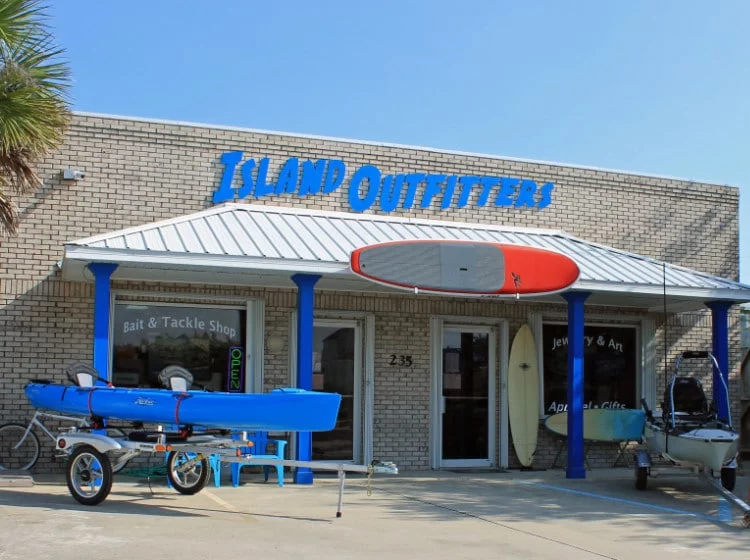
Island Outfitters
St. George Island

Carrabelle Bicycle House and Coastal Motion Paddleboard
Carrabelle
Paddling Tour Guides

Island Fit SUP
St. George Island
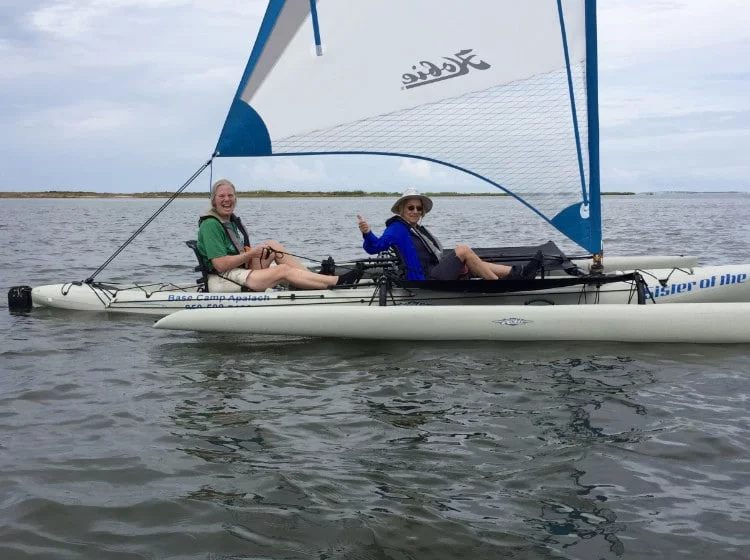
Basecamp Apalach
Apalachicola
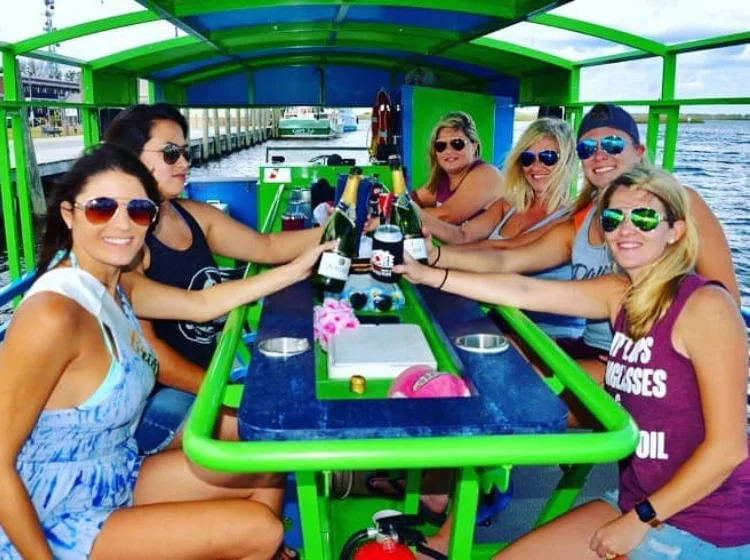
High-Five Adventures
Apalachicola
